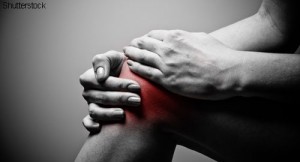 New data indicate high-intensity strength training does not significantly reduce knee pain or knee joint compressive forces in patients with knee osteoarthritis (OA).
New data indicate high-intensity strength training does not significantly reduce knee pain or knee joint compressive forces in patients with knee osteoarthritis (OA).
Stephen P. Messler, PhD, director of the J.B. Snow Biomechanics Laboratory at Wake Forest University, Winston-Salem, N.C., and colleagues questioned whether long-term, high-intensity strength training could affect the biomechanical pathway and attenuate OA disease progression. However, the results from their randomized clinical trial do not support the use of high-intensity strength training over low-intensity strength training or attention control, during which participants attended 60-minute workshops that covered foot care, nutrition, managing medication and sleep practices bi-weekly for the first six months and monthly thereafter. The authors propose that any improvements to knee pain and function may be primarily due to placebo effect, natural history of disease and regression to the mean. Their findings were published in the February issue of JAMA.1
The study included 377 participants, primarily obese, white men with knee OA. The investigators randomized participants into three groups: high-intensity strength training, low-intensity strength training and attention control. During the first six months of the study, patients in the high-intensity group had an adherence rate of 78%, patients in the low-intensity group had an adherence rate of 77% and patients in the attention control group had an adherence rate of 69%. At 18 months, the adherence rates were 66% for the high-intensity group, 69% for the low-intensity group and 80% for the attention control group.
The investigators compared the patients’ mean adjusted Western Ontario and McMaster Universities Osteoarthritis Index (WOMAC) pain scores at six and 18 months. At six months, researchers found the low-intensity group had statistically significant lower WOMAC scores for knee pain and better WOMAC scores for function than the high-intensity group. However, the knee joint compressive forces between the groups were not statistically different.
When the investigators compared the six-minute walk distance of patients at baseline and six months, they found no difference between the high-intensity group and the attention control group. But they did find the mean distance in the high-intensity group was significantly less than that of the low-intensity group.
At the 18-month follow-up, researchers found a decrease in medial joint space of 4–5% per year across all groups, which was consistent with the natural history of OA progression. Also, they found no statistically significant differences in knee pain; knee joint compressive force; or the six-minute walk distance between the groups. The mean thigh muscle volume and the mean log interleukin 6 levels were also similar for all the groups. Knee pain improved approximately 33% in all groups.

